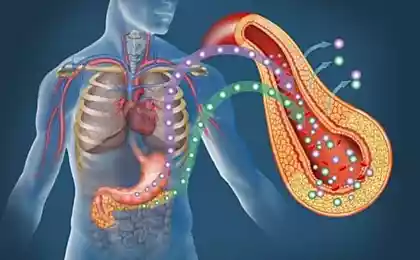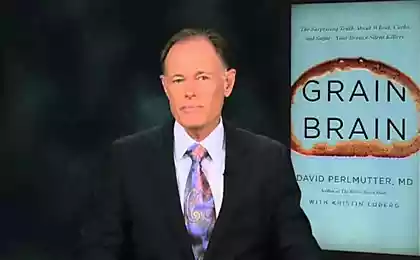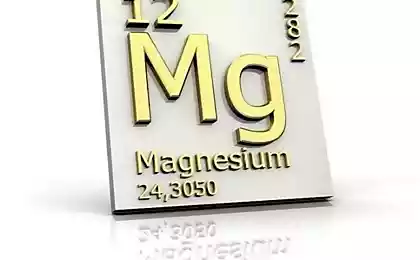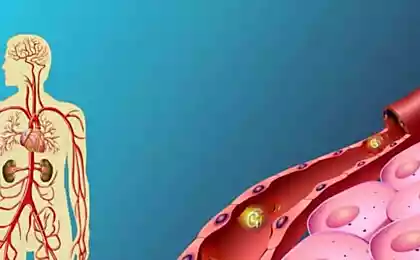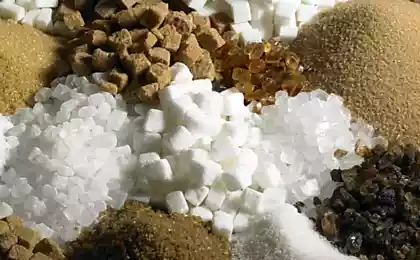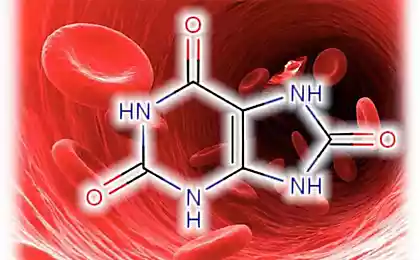378
Diabetes 2 types
Most diabetics fall into a black hole of helplessness with no idea how to reverse it. The biggest concern is that more than half of people with type 2 diabetesDon't know.They have diabetes, as do not know about their condition and 90% of people in the prediabetes stage.

Type 1 diabetes and insulin dependence
Type 1 diabetes, also known as diabetes mellitus It is a chronic condition that is traditionally characterized by elevated blood glucose levels, often simply referred to as “high blood sugar.”
Type 1 diabetes or “juvenile diabetes” is relatively rare. It develops in people younger than 20 years and treatment for it is unknown.
The most alarming is that the incidence of juvenile diabetes is steadily increasing, as is the incidence of type 2 diabetes: In the past few decades, rates have risen 24 percent among non-Hispanic white children aged 10-14.
But for black children, the problem is much bigger: 200 percent increase! And, according to recent studies, by 2020 these figures will double for all young people.
In type 1 diabetes, the immune system destroys insulin-producing cells in the pancreas. As a result, there is a loss of the hormone insulin. Type 1 diabetics need additional insulin for the rest of their lives, because its absence will quickly lead to death. There is currently no known cure for type 1 diabetes, except for a pancreatic transplant.
Type 2 diabetes: curable by almost 100%
A much more common form of diabetes is type 2, which affects 90-95% of diabetics. In this type, the body produces insulin, but is not able to recognize it and use it correctly. This is considered an advanced stage of insulin resistance. Due to insulin resistance in the body, glucose levels increase, which leads to many complications.
There may be all signs of diabetes, but it is often overlooked that type 2 diabetes is completely preventable and nearly 100 percent curable. Signs that you may have diabetes include:
Excessive thirst
Excessive hunger (even after eating)
Nausea and possibly vomiting
Unusual weight gain or loss
Increased fatigue
Irritability
Blurred vision
Slow wound healing
Frequent infections (skin, urinary tract and vagina)
Numbness or tingling in the hands and feet
How to Misunderstand Diabetes
Diabetes is NOT a blood sugar disease, but rather an insulin and leptin signaling disorder that develops over a long period of time.First from the stage of prediabetes, and then into full-blown diabetes, if not addressed.
One reason why traditional insulin shots or pills not only fail to cure diabetes, but sometimes even make it worse. - This is a refusal to act on the underlying problem of the disease.
The key to this issue is insulin sensitivity.
The task of the pancreas is to produce the hormone insulin and release it into the blood, thereby regulating the glucose level necessary for life.
The function of insulin is to be a source of energy for cells. In other words, insulin is necessary for you to live, and usually the pancreas produces as much insulin as the body needs. But certain risk factors and other circumstances can cause the pancreas to stop doing its job properly.
Risk factors for type 2 diabetes(Source: National Diabetes Education Program)
Age over 45 years
Overweight or obesity
Family history of diabetes
Hypertension
Physical passivity
Depression
Gestational diabetes in history
Atherosclerotic cardiovascular disease
HDL-X below 35 mg/dL
Fasting triglycerides over 250 mg/dL
Treatment with atypical antipsychotics, glucocorticoids
Obstructive sleep apnea and chronic sleep deprivation
Certain health conditions associated with insulin resistance
Belonging to a high-risk population (Afro-Americans, Hispanics, Native American or Asian Americans)
It’s likely that if you have one or more of these risk factors, or if your blood glucose levels are elevated, you’ll be tested for diabetes and given insulin—in pills or injections, and sometimes both.
Your doctor will tell you that the purpose of these injections or pills is to lower your blood sugar. It can even explain to you that this is necessary, as insulin regulation plays an integral role in your health and longevity.
He might add that elevated glucose is a symptom not only of diabetes, but also of heart disease, peripheral vascular disease, stroke, hypertension, cancer and obesity. Of course, the doctor would be absolutely right.
But will he or she go beyond that explanation? Will they tell you about the role of leptin in this process? Or that if your body develops leptin resistance, you're right on your way to diabetes, if you're not already there?
Probably not.
Diabetes, leptin and insulin resistance
Leptin is a hormone produced in fat cells. One of its main functions is to regulate appetite and body weight. It tells the brain when to eat, how much to eat, and when to stop eating – which is why it is called the “satisfaction hormone.” In addition, it tells the brain how to use the available energy.
Not so long ago it was found that mice without leptin become very fat. Similarly, in humans, when leptin resistance occurs that mimics leptin deficiency, it is very easy to gain weight quickly.
For the discovery of leptin and its role in the body, we should thank Jeffrey M. Friedman and Douglas Coleman, two researchers who discovered the hormone in 1994. Interestingly, Friedman called leptin the Greek word for "leptos," meaning "thin," after finding that mice injected with synthetic leptin became more active and lost weight.
But when Friedman found very high levels of leptin in the blood of obese people, he decided that something else was going to happen. That "something" was The ability of obesity to cause leptin resistance- in other words, in obese people, the signaling pathway for leptin shifts, because of which the body produces leptin in excessJust like glucose if insulin resistance develops.
Friedman and Coleman also discovered that leptin is responsible for insulin signaling accuracy and insulin resistance.
Thus, The main role of insulin is Not to reduce blood sugar levels, but To store additional energy (glycogen, starch) for current and future consumption. Its ability to lower blood sugar levels is just a side effect of this energy conservation process. Ultimately, this means that Diabetes is both an insulin disease and a leptin signaling disorder.
That’s why “treating” diabetes by simply lowering blood sugar levels can be unsafe. Such treatment simply does not address the actual problem of impaired metabolic communication occurring in every cell in the body if leptin and insulin levels are disrupted and stop working together as they should be.
Taking insulin can even worsen the condition of some patients with type 2 diabetes, as over time it worsens their resistance to leptin and insulin. The only known How to restore the correct leptin signaling (and insulin) dietary. And I promise you, it will have a deeper impact on your health than any known drug or medical treatment.

Fructose: driving the epidemic of diabetes and obesity
An expert on leptin resistance and its role in diabetes is Dr. Richard Johnson, head of nephrology at the University of Colorado. His book TheFatSwitch dispels many outdated myths about diet and weight loss.
Dr. Johnson explains how Consuming fructose activates a powerful biological switch that causes us to gain weight.. In terms of metabolism, it is a highly useful ability that allows many species, including humans, to survive periods of food shortage.
Unfortunately, if you live in a developed country where food is abundant and readily available, this fat switch loses its biological advantage, and instead of helping people live longer, it becomes a disadvantage that kills them prematurely.
You may be interested to know that dying of sugar is not an exaggeration. The vast amount of fructose in the diet of the average person is a major factor in the increase in the incidence of diabetes in the country. While glucose is designed to be used by the body for energy. (Regular sugar is 50 percent glucose) fructose is broken down into a number of toxins that can destroy health.

Diabetes medications are not the answer
Most conventional treatments for type 2 diabetes use drugs that increase insulin levels or lower blood sugar levels.
As I said before, the problem is that Diabetes is NOT a disease of blood sugar.
Paying attention to the symptom of diabetes (which is elevated blood sugar) rather than eliminating the underlying cause is martyshkin labor, which can sometimes be simply dangerous. Nearly 100 percent of type 2 diabetics can be successfully treated without medication. You may be surprised, but inYou can recover if you eat right, exercise and live.
Effective Nutrition and Lifestyle Tips for Diabetes
I have reduced the various effective ways to increase insulin and leptin sensitivity, and prevent or reverse diabetes, to six simple and easy-to-do steps.
It is especially important to avoid processed meat.In a groundbreaking study that compared processed and unprocessed meat for the first time, researchers at the Harvard School of Public Health found that eating processed meat was associated with a 42 percent increased risk of heart disease and a 19 percent increased risk of type 2 diabetes. Interestingly, the risk of heart disease or diabetes in people who consumed unprocessed red meat, such as beef, pork or lamb, was not established.
Cancer can be killed in 11 days. Only need 2 drugs.
Tap on the thyroid gland and 6 more useful kinesiological exercises
Sun exposure holds promise for the treatment and prevention of diabetes – studies show an important link between high levels of vitamin D and reduced risk of type 2 diabetes, cardiovascular disease and metabolic syndrome. published
Credit Joseph Mercola
Source: russian.mercola.com/sites/articles/archive/2017/01/17/%D0%B4%D0%B8%D0%B0%B1%D0%B5%D1%82.aspx

Type 1 diabetes and insulin dependence
Type 1 diabetes, also known as diabetes mellitus It is a chronic condition that is traditionally characterized by elevated blood glucose levels, often simply referred to as “high blood sugar.”
Type 1 diabetes or “juvenile diabetes” is relatively rare. It develops in people younger than 20 years and treatment for it is unknown.
The most alarming is that the incidence of juvenile diabetes is steadily increasing, as is the incidence of type 2 diabetes: In the past few decades, rates have risen 24 percent among non-Hispanic white children aged 10-14.
But for black children, the problem is much bigger: 200 percent increase! And, according to recent studies, by 2020 these figures will double for all young people.
In type 1 diabetes, the immune system destroys insulin-producing cells in the pancreas. As a result, there is a loss of the hormone insulin. Type 1 diabetics need additional insulin for the rest of their lives, because its absence will quickly lead to death. There is currently no known cure for type 1 diabetes, except for a pancreatic transplant.
Type 2 diabetes: curable by almost 100%
A much more common form of diabetes is type 2, which affects 90-95% of diabetics. In this type, the body produces insulin, but is not able to recognize it and use it correctly. This is considered an advanced stage of insulin resistance. Due to insulin resistance in the body, glucose levels increase, which leads to many complications.
There may be all signs of diabetes, but it is often overlooked that type 2 diabetes is completely preventable and nearly 100 percent curable. Signs that you may have diabetes include:
Excessive thirst
Excessive hunger (even after eating)
Nausea and possibly vomiting
Unusual weight gain or loss
Increased fatigue
Irritability
Blurred vision
Slow wound healing
Frequent infections (skin, urinary tract and vagina)
Numbness or tingling in the hands and feet
How to Misunderstand Diabetes
Diabetes is NOT a blood sugar disease, but rather an insulin and leptin signaling disorder that develops over a long period of time.First from the stage of prediabetes, and then into full-blown diabetes, if not addressed.
One reason why traditional insulin shots or pills not only fail to cure diabetes, but sometimes even make it worse. - This is a refusal to act on the underlying problem of the disease.
The key to this issue is insulin sensitivity.
The task of the pancreas is to produce the hormone insulin and release it into the blood, thereby regulating the glucose level necessary for life.
The function of insulin is to be a source of energy for cells. In other words, insulin is necessary for you to live, and usually the pancreas produces as much insulin as the body needs. But certain risk factors and other circumstances can cause the pancreas to stop doing its job properly.
Risk factors for type 2 diabetes(Source: National Diabetes Education Program)
Age over 45 years
Overweight or obesity
Family history of diabetes
Hypertension
Physical passivity
Depression
Gestational diabetes in history
Atherosclerotic cardiovascular disease
HDL-X below 35 mg/dL
Fasting triglycerides over 250 mg/dL
Treatment with atypical antipsychotics, glucocorticoids
Obstructive sleep apnea and chronic sleep deprivation
Certain health conditions associated with insulin resistance
Belonging to a high-risk population (Afro-Americans, Hispanics, Native American or Asian Americans)
It’s likely that if you have one or more of these risk factors, or if your blood glucose levels are elevated, you’ll be tested for diabetes and given insulin—in pills or injections, and sometimes both.
Your doctor will tell you that the purpose of these injections or pills is to lower your blood sugar. It can even explain to you that this is necessary, as insulin regulation plays an integral role in your health and longevity.
He might add that elevated glucose is a symptom not only of diabetes, but also of heart disease, peripheral vascular disease, stroke, hypertension, cancer and obesity. Of course, the doctor would be absolutely right.
But will he or she go beyond that explanation? Will they tell you about the role of leptin in this process? Or that if your body develops leptin resistance, you're right on your way to diabetes, if you're not already there?
Probably not.
Diabetes, leptin and insulin resistance
Leptin is a hormone produced in fat cells. One of its main functions is to regulate appetite and body weight. It tells the brain when to eat, how much to eat, and when to stop eating – which is why it is called the “satisfaction hormone.” In addition, it tells the brain how to use the available energy.
Not so long ago it was found that mice without leptin become very fat. Similarly, in humans, when leptin resistance occurs that mimics leptin deficiency, it is very easy to gain weight quickly.
For the discovery of leptin and its role in the body, we should thank Jeffrey M. Friedman and Douglas Coleman, two researchers who discovered the hormone in 1994. Interestingly, Friedman called leptin the Greek word for "leptos," meaning "thin," after finding that mice injected with synthetic leptin became more active and lost weight.
But when Friedman found very high levels of leptin in the blood of obese people, he decided that something else was going to happen. That "something" was The ability of obesity to cause leptin resistance- in other words, in obese people, the signaling pathway for leptin shifts, because of which the body produces leptin in excessJust like glucose if insulin resistance develops.
Friedman and Coleman also discovered that leptin is responsible for insulin signaling accuracy and insulin resistance.
Thus, The main role of insulin is Not to reduce blood sugar levels, but To store additional energy (glycogen, starch) for current and future consumption. Its ability to lower blood sugar levels is just a side effect of this energy conservation process. Ultimately, this means that Diabetes is both an insulin disease and a leptin signaling disorder.
That’s why “treating” diabetes by simply lowering blood sugar levels can be unsafe. Such treatment simply does not address the actual problem of impaired metabolic communication occurring in every cell in the body if leptin and insulin levels are disrupted and stop working together as they should be.
Taking insulin can even worsen the condition of some patients with type 2 diabetes, as over time it worsens their resistance to leptin and insulin. The only known How to restore the correct leptin signaling (and insulin) dietary. And I promise you, it will have a deeper impact on your health than any known drug or medical treatment.

Fructose: driving the epidemic of diabetes and obesity
An expert on leptin resistance and its role in diabetes is Dr. Richard Johnson, head of nephrology at the University of Colorado. His book TheFatSwitch dispels many outdated myths about diet and weight loss.
Dr. Johnson explains how Consuming fructose activates a powerful biological switch that causes us to gain weight.. In terms of metabolism, it is a highly useful ability that allows many species, including humans, to survive periods of food shortage.
Unfortunately, if you live in a developed country where food is abundant and readily available, this fat switch loses its biological advantage, and instead of helping people live longer, it becomes a disadvantage that kills them prematurely.
You may be interested to know that dying of sugar is not an exaggeration. The vast amount of fructose in the diet of the average person is a major factor in the increase in the incidence of diabetes in the country. While glucose is designed to be used by the body for energy. (Regular sugar is 50 percent glucose) fructose is broken down into a number of toxins that can destroy health.

Diabetes medications are not the answer
Most conventional treatments for type 2 diabetes use drugs that increase insulin levels or lower blood sugar levels.
As I said before, the problem is that Diabetes is NOT a disease of blood sugar.
Paying attention to the symptom of diabetes (which is elevated blood sugar) rather than eliminating the underlying cause is martyshkin labor, which can sometimes be simply dangerous. Nearly 100 percent of type 2 diabetics can be successfully treated without medication. You may be surprised, but inYou can recover if you eat right, exercise and live.
Effective Nutrition and Lifestyle Tips for Diabetes
I have reduced the various effective ways to increase insulin and leptin sensitivity, and prevent or reverse diabetes, to six simple and easy-to-do steps.
- Physical activity: Unlike existing recommendations to take care of and not exercise during illness, maintaining fitness plays a very important role in controlling the situation in diabetes and other diseases. In fact, this is one of the fastest and most effective ways to reduce insulin and leptin resistance. Start today, read about Peak Fitness and high-intensity interval workouts – less time in the gym, more benefit.
- Avoid grains and sugar and ALL processed foodsEspecially those that contain fructose and high fructose corn syrup. Treatment of diabetes with traditional methods has not been successful in the past 50 years, partly due to serious shortcomings of the promoted principles of nutrition.
It is especially important to avoid processed meat.In a groundbreaking study that compared processed and unprocessed meat for the first time, researchers at the Harvard School of Public Health found that eating processed meat was associated with a 42 percent increased risk of heart disease and a 19 percent increased risk of type 2 diabetes. Interestingly, the risk of heart disease or diabetes in people who consumed unprocessed red meat, such as beef, pork or lamb, was not established.
- In addition to fructose, eliminate trans fats. which increase the risk of diabetes and inflammation by disrupting insulin receptors.
- Eat plenty of omega-3 fats from high quality sources of animal origin.
- Watch your insulin levels. Just as important as fasting blood sugar, fasting insulin, or A1-C, should be between 2 and 4. The higher the level, the worse the insulin sensitivity.
- Take probiotics. Your gut is a living ecosystem of many bacteria. The more beneficial bacteria in it, the stronger the immunity and the better your overall functionality. Optimize your intestinal flora by eating fermented foods like natto, miso, kefir, raw organic cheese, and cultured vegetables. You can also take high-quality probiotic supplements.
Cancer can be killed in 11 days. Only need 2 drugs.
Tap on the thyroid gland and 6 more useful kinesiological exercises
Sun exposure holds promise for the treatment and prevention of diabetes – studies show an important link between high levels of vitamin D and reduced risk of type 2 diabetes, cardiovascular disease and metabolic syndrome. published
Credit Joseph Mercola
Source: russian.mercola.com/sites/articles/archive/2017/01/17/%D0%B4%D0%B8%D0%B0%B1%D0%B5%D1%82.aspx
